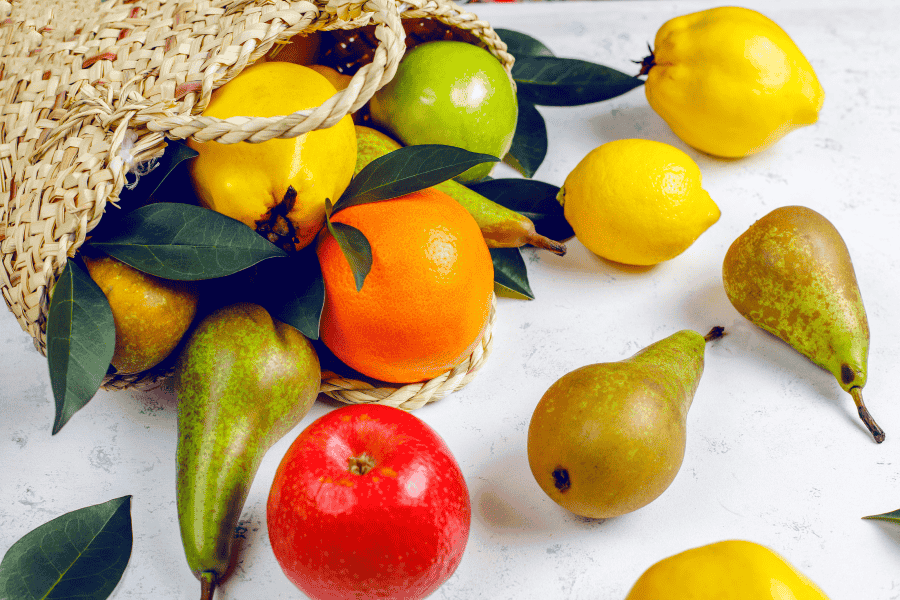
Seasonal & Local Produce: Why Fresh, Loc...

Seasonal & Local Produce: Why Fresh, Local Ingredients Should Be Your First Choice
At your local grocery store, there's a treasure trove of seasonal and local produce just waiting to be discovered. When you choose seasonal and locally sourced fruits and vegetables, you're not just selecting fresh ingredients — you're also supporting sustainable farming practices and enjoying the very best that each season has to offer. In this blog post, we’ll explore the benefits of choosing seasonal and local produce and how you can incorporate it into your meals for a healthier, more eco-friendly lifestyle.
What is Seasonal Produce?
Seasonal produce refers to fruits and vegetables that are harvested during their peak growing seasons. These foods are at their most flavorful and nutritious when consumed during their natural harvest period. For example:
- Spring: Asparagus, strawberries, peas, and radishes.
- Summer: Tomatoes, zucchini, berries, peaches, and corn.
- Fall: Apples, pumpkins, sweet potatoes, and kale.
- Winter: Citrus fruits, Brussels sprouts, root vegetables, and winter squash.
Eating with the seasons means you're consuming produce that is at its peak quality and is often more affordable because it’s plentiful and easy to harvest.
Why Choose Local Produce?
Local produce is grown within a certain geographic area, usually within a short distance of where you live. Here’s why buying local is a great choice:
- Fresher, More Nutritious: Local produce is typically harvested at the peak of ripeness and sold quickly, so it retains more of its natural nutrients.
- Better for the Environment: By purchasing local, you're reducing the carbon footprint associated with long-distance food transportation. Local farming practices are also generally more sustainable.
- Supports Local Farmers: Buying local helps support local economies and small-scale farmers, ensuring they can continue to grow fresh produce for your community.
- Supports Biodiversity: Local produce often comes from small, diverse farms that prioritize crop rotation and organic methods, which is better for the environment and for the soil.
Benefits of Eating Seasonal & Local Produce:
- Better Taste & Flavor: Seasonal and local produce is fresher, often picked at its peak ripeness, resulting in better flavor and taste.
- Healthier Options: Seasonal produce is packed with nutrients, offering the best health benefits when consumed during its peak season.
- More Affordable: Because seasonal produce is abundant and local supply chains are shorter, it tends to be more affordable than out-of-season or imported items.
- Variety & Creativity in Cooking: Eating seasonally encourages you to explore new fruits and vegetables throughout the year, helping you diversify your meals and try new recipes.
- Supporting Sustainable Practices: Local and seasonal produce is often grown using environmentally friendly practices, which help protect local ecosystems and reduce your environmental impact.
How to Incorporate Seasonal & Local Produce Into Your Meals:
- Make a Seasonal Salad: Choose fruits and veggies that are in season, like fresh tomatoes, cucumbers, and leafy greens in the summer, or roasted root vegetables and apples in the fall.
- Try New Fruits & Vegetables: Don't shy away from trying something new! If you've never tried kohlrabi, rhubarb, or artichokes, find a recipe and give them a try when they’re in season.
- Preserve for the Off-Season: Stock up on fresh, seasonal produce when it’s abundant, and preserve it by canning, freezing, or pickling so you can enjoy it later in the year.
- Shop at Farmers Markets: Visit your local farmers' market for the freshest produce directly from local farms. You’ll get the chance to meet the farmers and learn more about how the food is grown.






